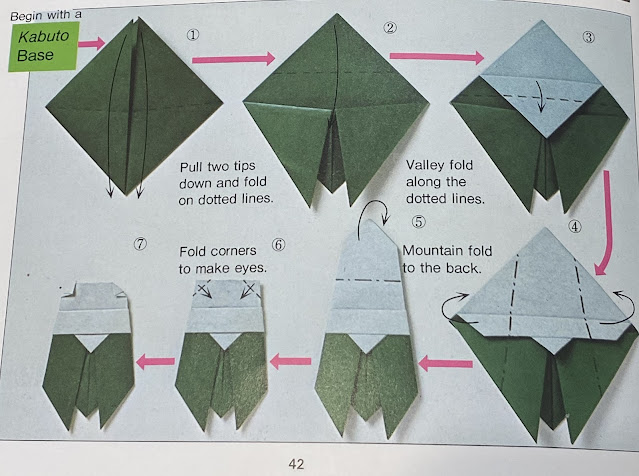Over the last few years, I have created an "advent" regime of creating something with a Christmas theme in the month of December - sometimes, it's been drawing, tags, cards or sharing photos . The themes have been Christmas Tags, Christmas Firsts , Christmas \postage stamps, Christmas cake, and crazy Christmas trees from the past. You can search this blog with the tag #christmas countdown and see what you can find ?
My mother used to love the #Christmas Countdown series and it is now almost a year since she passed away. The "lead -in" to Christmas and origami were a couple of her favourite things, so this year, 2023, my December goal is to make a paper folded Christmas tree ornament each day n her memory.
1 December, 2023 : To start with, I chose the simplest little pinwheel and added a button and a star.
2 December, 2023 : This folded shape starts with a pinwheel, so it seemed the logical follow on. And I also stitched on a button and sparking star. These instructions for the pinwheel and pendant were found on the back of an origami calendar which my mother had amongst her stash, so I include them here.
3 December, 2023 : Where I live, Christmas is in summer, so a time for cicadas . Please use your imagination a little to appreciate this paper folded cicada and some instructions from the book , Origami by Hideaki Sakata ( Graph-Sha/Japan Publications 1984 )
4 December , 2023 : Summer also brings beautiful parrots to the flowering eucalyptus tree in our garden. Here is my 4th decoration, a green parrot. I modified the instructions for a dove from the aforementioned book to create this paper bird.









Comments
Post a Comment
Thanks for reading my blog and please share your thoughts about my blog post by leaving a comment.Your comment won't appear immediately as comments are verified before publication in an effort to reduce the amount of spam appearing. Anonymous comments will not be published.